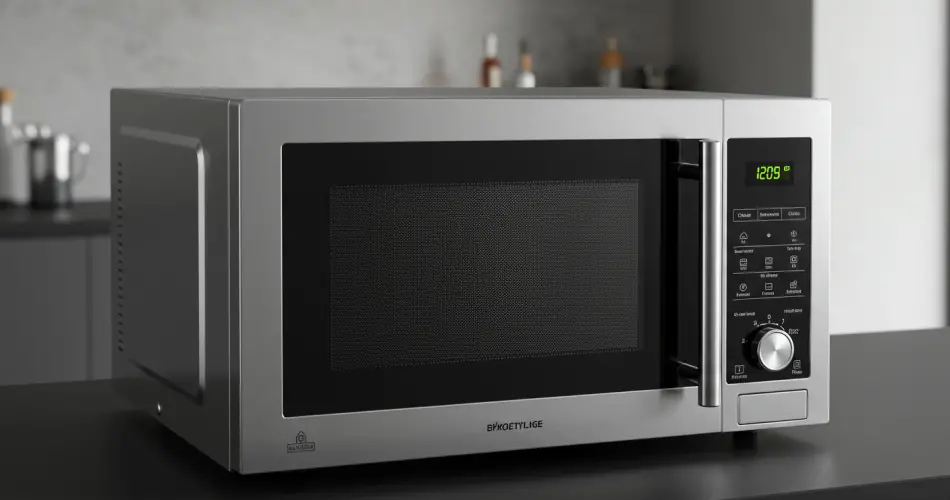When most people think about saving electricity at home, they focus on the big culprits: refrigerators, washing machines, or heating and cooling systems. Rarely does the microwave oven make the list. After all, it’s only used for a few minutes at a time to warm up food, so how much energy could it possibly waste?
Surprisingly, your microwave may be costing you more than you think—even when it’s not in use. That’s right: most microwaves continue to draw power in standby mode, quietly adding unnecessary costs to your electricity bill each year.
Let’s break down how this happens, what it really costs, and the simple steps you can take to save money.
Why Energy Efficiency Matters
In recent years, energy efficiency has become a key factor in household purchasing decisions. From refrigerators to washing machines, consumers now compare appliances not only based on performance but also on how much energy they consume.
Microwave ovens are no exception. Choosing a model with a higher energy efficiency rating can bring multiple benefits:
-
Lower energy bills – Efficient models require less electricity to generate the same amount of heat, saving you money in the long run.
-
Environmental benefits – Reduced electricity use means a smaller carbon footprint, helping households contribute to sustainability.
-
Durability – Energy-efficient microwaves often come with better components and longer lifespans, reducing the need for frequent replacements.
-
Safety features – Many high-efficiency models are equipped with built-in protections against overheating or short circuits, reducing fire hazards.
-
Better cooking performance – Higher efficiency doesn’t just save power—it often translates into faster, more even cooking, improving meal quality and saving time.
So while buying an energy-efficient microwave may require a slightly larger upfront investment, the long-term financial and environmental payoffs are undeniable.
The Hidden Cost of Standby Mode
Here’s the surprising truth: a microwave continues to use electricity even when you’re not using it.
This happens because most modern microwaves are designed with standby functions. You may recognize these as:
-
A digital clock on the display
-
Pre-programmed cooking functions
-
Automatic reheat or quick-start options
These features seem convenient, but they require a constant flow of electricity to stay active—even if you never touch them.
The energy consumption might not sound like much on a day-to-day basis, but it adds up significantly over time. On average:
-
Older or lower-quality models can consume up to 27 kWh per year while in standby mode.
-
Depending on your electricity rates, this translates to around €20 (about $22 USD) annually—money spent without ever pressing the “start” button.
It’s the equivalent of leaving a small light bulb switched on 24/7 all year long, just to keep your microwave’s clock glowing.
How to Stop Wasting Energy
If you want to stop paying for unused power, the solution is simple: unplug the microwave when you’re not using it.
This may sound inconvenient, but pulling the plug eliminates all standby consumption. You only use electricity when the microwave is actively heating food.
Here are some practical ways to make the habit easier:
-
Use a power strip – Plug the microwave into a surge-protected power strip with an on/off switch. This way, you don’t have to reach behind the appliance each time; just flick the switch when you’re done.
-
Unplug overnight or during long absences – If you use the microwave mostly in the morning or evening, unplug it during the day. Similarly, disconnect it before going on vacation.
-
Re-evaluate the clock function – If you rely on the microwave clock, consider whether it’s worth the extra cost. A wall clock or your phone can serve the same purpose without hidden electricity costs.
Smarter Microwave Use for Bigger Savings
Unplugging isn’t the only way to save on microwave-related energy use. A few extra habits can help reduce your overall electricity bills even further:
-
Use the microwave wisely – Only turn it on when you actually need to cook or reheat something. Avoid using it as a timer or for unnecessary quick-start operations.
-
Cook in batches – If you plan to heat multiple items, try to do them consecutively. This minimizes the time the appliance spends turning on and off.
-
Choose smaller containers – Heating smaller amounts of food requires less time and therefore less energy.
-
Keep it clean – Food splatters inside can absorb energy, making the microwave work harder. Wiping it down regularly keeps it efficient.
-
Upgrade to a high-quality model – Look for microwaves with auto shut-off functions or energy-saving modes, which turn the appliance off completely after cooking.
The Bigger Picture
It may feel trivial to worry about the standby consumption of a single microwave, especially when compared to bigger appliances like refrigerators or air conditioners. However, every small change adds up.
Think of it this way: if every household in your neighborhood unplugged their microwave when not in use, the collective energy savings could power dozens of homes for an entire year.
At the same time, reducing standby consumption aligns with a broader movement toward sustainable living. By cutting unnecessary energy waste, households can lower their bills while contributing to environmental conservation.
Final Thoughts
Your microwave might be a convenient kitchen companion, but it could also be quietly draining your wallet. While the display clock and standby functions may look harmless, they can cost up to €20 per year in wasted electricity—just for being plugged in.
The good news is that you don’t need expensive upgrades or complicated systems to fix the problem. Simply unplugging your microwave when not in use, or using a power strip, can eliminate standby costs entirely.
Pair this with smart cooking habits and an investment in an energy-efficient model, and you’ll enjoy the benefits of lower bills, better safety, and improved performance.
Sometimes, the easiest savings come from the appliances we least expect. And in the case of your microwave, the solution is literally as simple as pulling the plug.



